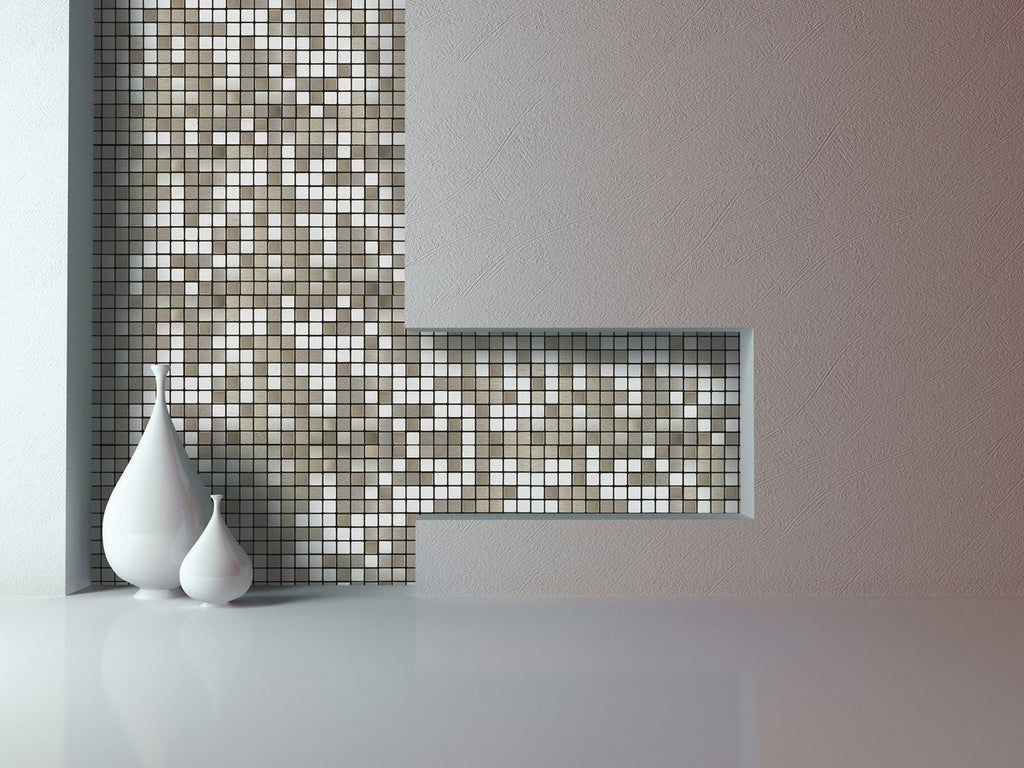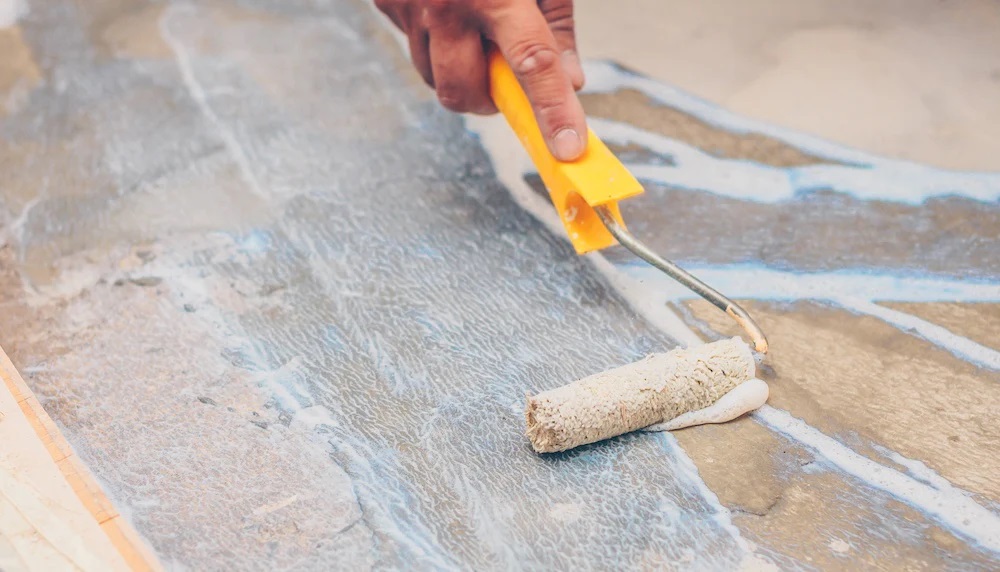Have you ever stared at a bag of tile adhesive, wondering if it’s just a one-trick pony? Can the stuff that sticks tiles to walls also be called upon for flooring duties? Maybe you’re facing a budget crunch and want to make the most of your supplies. Maybe you’re just curious. Whatever the reason, the simple answer is: it depends.

Image: www.houseofmosaics.co.uk
Choosing the right adhesive is crucial for a successful tile installation, both in terms of longevity and aesthetics. While wall tile adhesives are designed for vertical surfaces, using them on floors can lead to unexpected problems. This article dives into the complexities of using wall tile adhesive on floors, analyzing its pros and cons, and providing practical insights to help you make an informed decision.
Understanding the Differences
The key difference between wall tile adhesives and floor tile adhesives lies in their formulation and intended purpose. Wall tile adhesives are typically thinner and designed for vertical surfaces where the primary stress is downward. They prioritize adhesion to the substrate and flexibility to accommodate minor wall movement. However, floor tile adhesives are formulated for high-traffic areas and are designed to withstand significant stresses from foot traffic and heavy furniture. They are generally thicker, offering greater shear strength and resistance to lateral movement.
When You Can Get Away With Using Wall Tile Adhesive
There are a few situations where using wall tile adhesive on floors might be acceptable, but always exercise caution:
- Low-Traffic Areas: If you’re installing tiles in a low-traffic area, such as a small bathroom or a closet, using wall tile adhesive may be feasible. Just be mindful of the potential for adhesive failure over time.
- Thin-Set Mortars: Some wall tile adhesives are actually thin-set mortars with a modified formula. These can sometimes be used for floors, but make sure you thoroughly check the product label for compatibility.
- Small Tiles: For very small tiles, like mosaics, the stress on the adhesive is less. In these cases, wall tile adhesive might be sufficient, but again, always check the manufacturer’s recommendations.
Why Using Wall Tile Adhesive on Floors Could Be A Bad Idea
Despite the occasional exceptions, using wall tile adhesive on floors is generally not recommended. Here’s why:

Image: www.pergasgroup.com
1. Uneven Distribution of Stress
Floor tile adhesive is designed specifically to distribute weight evenly across the tile, reducing the chance of cracks and delamination. Wall tile adhesive, on the other hand, isn’t formulated for this purpose. If you use it on floors, the adhesive might not be able to handle the stress, leading to cracked tiles or even a complete detachment of the tile.
2. Insufficient Shear Strength
Floor tile adhesive has a higher shear strength, meaning it’s resistant to lateral movement. This is crucial for floors, where tiles experience constant sliding forces from foot traffic. Wall tile adhesive, with its lower shear strength, might not be able to withstand these forces, increasing the risk of tiles shifting and even becoming loose.
3. Potential for Moisture Issues
Some wall tile adhesives are more porous than floor tile adhesives. This porosity could lead to moisture absorption, especially in areas with high humidity or where spills are more common, potentially causing mold growth or damaging the substrate.
4. Lack of Warranty
Using wall tile adhesive for flooring applications almost always void the manufacturer’s warranty. If you encounter problems, you’ll likely be on your own to resolve them.
Important Considerations Before Choosing
Before you decide on an adhesive, consider these factors:
1. Tile Type
The type of tile plays a crucial role in determining the type of adhesive you need. Heavy tiles like porcelain or ceramic require a durable adhesive that can withstand their weight, while lighter tiles like glass or mosaic may be more forgiving. Check the manufacturer’s requirements for the specific tile you’re using.
2. Substrate Type
Your substrate, the material your tiles are being installed on, is equally important. The adhesive must be compatible with the substrate, whether it’s concrete, wood, backerboard, or another material. The manufacturer’s instructions will detail the recommended usage and compatibility for each substrate type.
3. Traffic Level
The level of traffic in the area where you’re installing tiles will influence the required adhesive strength. For high-traffic areas like kitchen floors and entryways, choose a strong, durable adhesive designed for heavy use. Low-traffic areas like bathrooms and powder rooms might allow the use of a slightly less robust adhesive.
Alternatives to Wall Tile Adhesive
If you’re on a budget and need to make your tile adhesive stretch, consider these alternative solutions:
1. Thin-Set Mortar
Thin-set mortar is a cost-effective alternative to pre-mixed tile adhesive. It’s available in both powdered and pre-mixed forms, and it’s typically more durable than wall tile adhesive. Be sure to choose a thin-set mortar specifically designed for flooring applications.
2. Modified Thin-Set Mortar
Modified thin-set mortar is a hybrid offering better flexibility and adhesion than standard thin-set. It’s a good choice for substrates that have some minor movement, like plywood, but still provides the strength needed for floors.
Can You Use Wall Tile Adhesive On Floors
https://youtube.com/watch?v=9N4f5N4GtDg
Conclusion
While using wall tile adhesive on floors may seem like a tempting shortcut, it’s generally not recommended. You risk compromising the integrity of your tile installation, leading to cracking, delamination, and a host of other problems. Investing in a flooring-specific adhesive, or exploring cost-effective alternatives like thin-set mortar, will ensure a more durable and long-lasting tile installation. Remember, the right adhesive is the foundation of a beautiful and functional tile floor, so choose wisely and enjoy your new floors for years to come!





